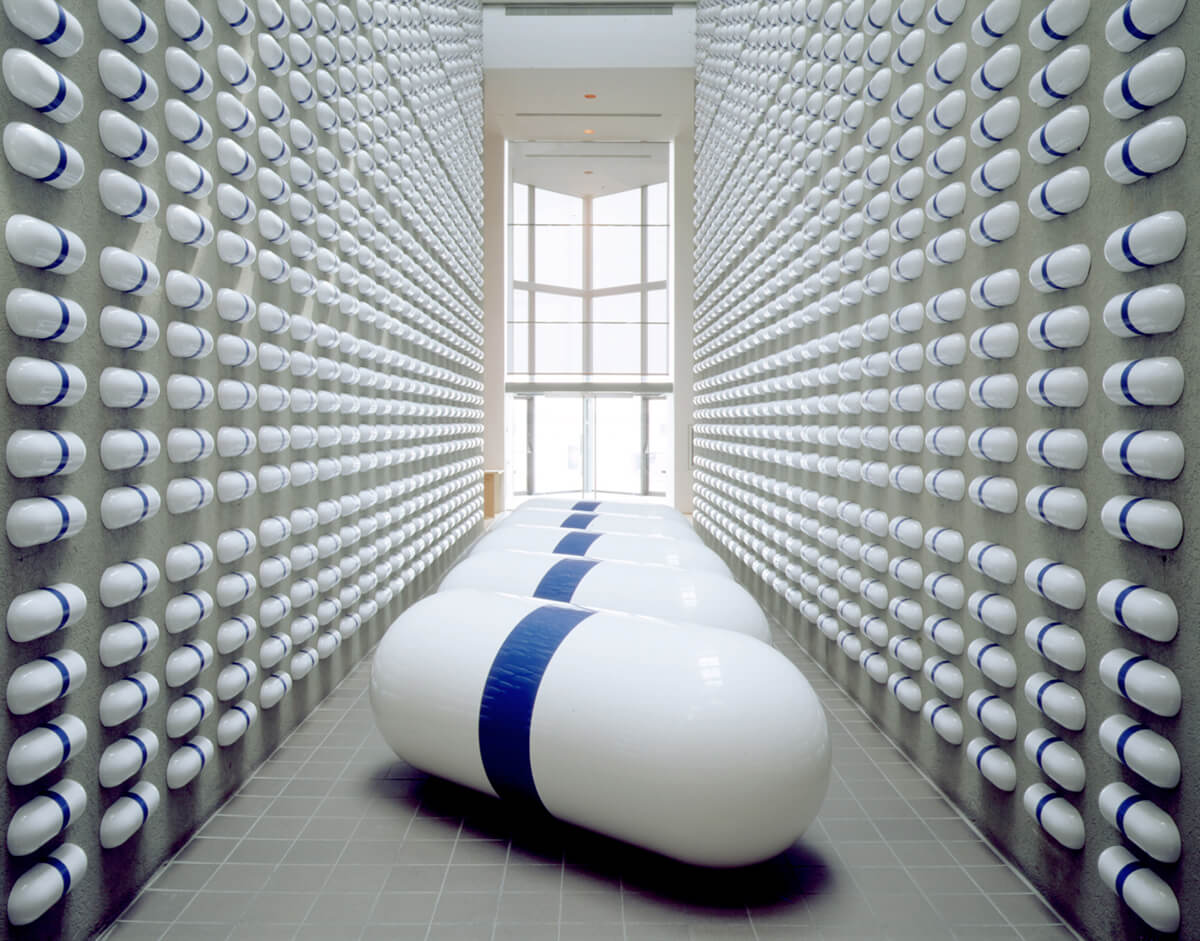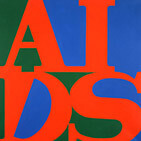One Year of AZT 1991

General Idea, One Year of AZT, 1991
1,825 units of vacuum-formed styrene with vinyl wall-mounted capsules, 12.7 x 31.7 x 6.3 cm each
National Gallery of Canada, Ottawa
This installation brings the challenges of living with HIV to the fore. Here, the artists have created plastic capsules that represent the antiretroviral drug AZT (azidothymidine), which Felix Partz was taking at the time. The installation is comprised of 1,825 pills, corresponding to the exact amount of Partz’s annual dosage.

Approved in 1987, AZT was the first drug in the United States to treat those with HIV and delay the onset of AIDS. AZT had significant side effects and was extremely toxic. Initial doses of the medication were quite high, and patients took the pills on a strict schedule throughout the day.
AA Bronson noted the personal significance of the work, as Felix Partz and Jorge Zontal were diagnosed with HIV in 1989 and 1990, respectively: “Our life was full of pills, our apartment was full of pills … so they became part of our work,” he said. “Your watch is ringing little bells every two to four hours and you have to take two of this and four of that.… [The work] was to create that environment, a pill environment. To reproduce that feeling. To give it a physical sense of what it’s like to be surrounded by pills … a very clinical atmosphere.”
One Year of AZT is a stark installation of white pills divided by blue stripes. Its bare aesthetic and restricted colour palette make reference to the formal aspects of Minimalist art. The work also functions as a calendar: it speaks to the passing of time, with pills organized in daily and monthly groups.
Part of the artists’ larger focus on the AIDS pandemic, One Year of AZT is usually exhibited together with the work One Day of AZT, 1991, which features five large pills, a daily dosage of the drug. The Fiberglas pills in One Day of AZT are on a monumental scale; each is slightly larger than a body, alluding to coffins.

 About the Author
About the Author
 More Online Art Books
More Online Art Books
 Acknowledgements
Acknowledgements